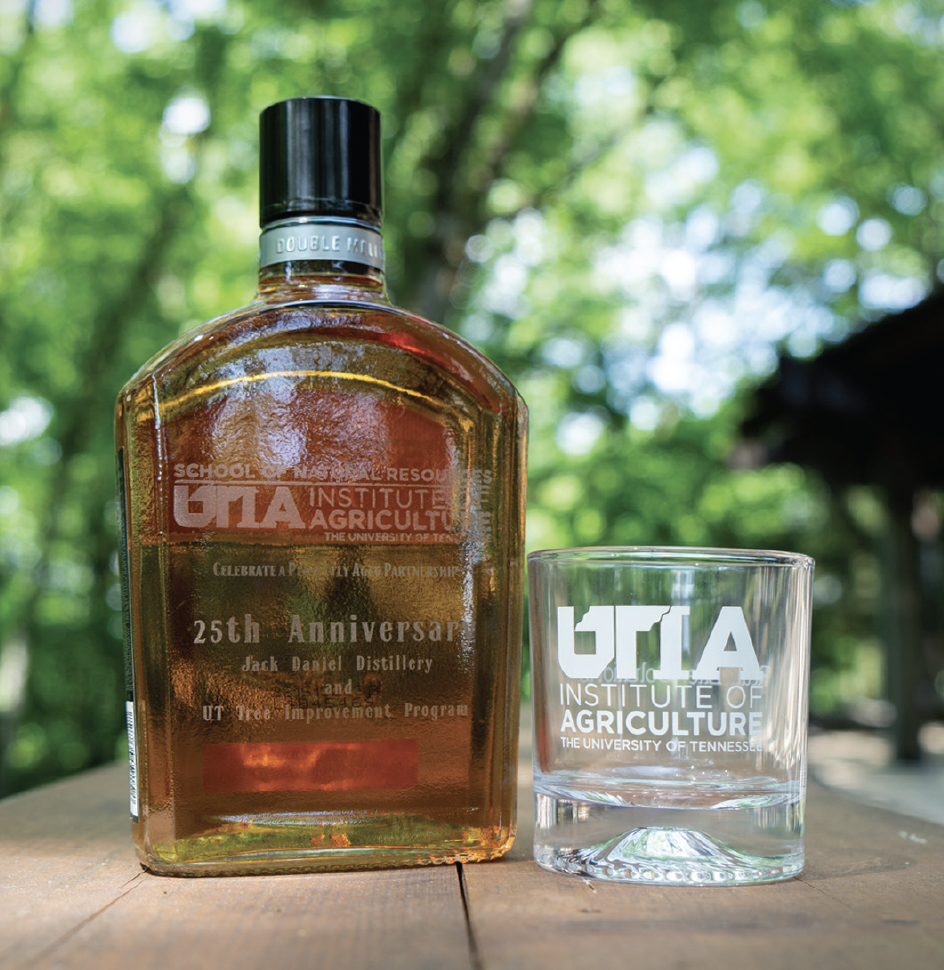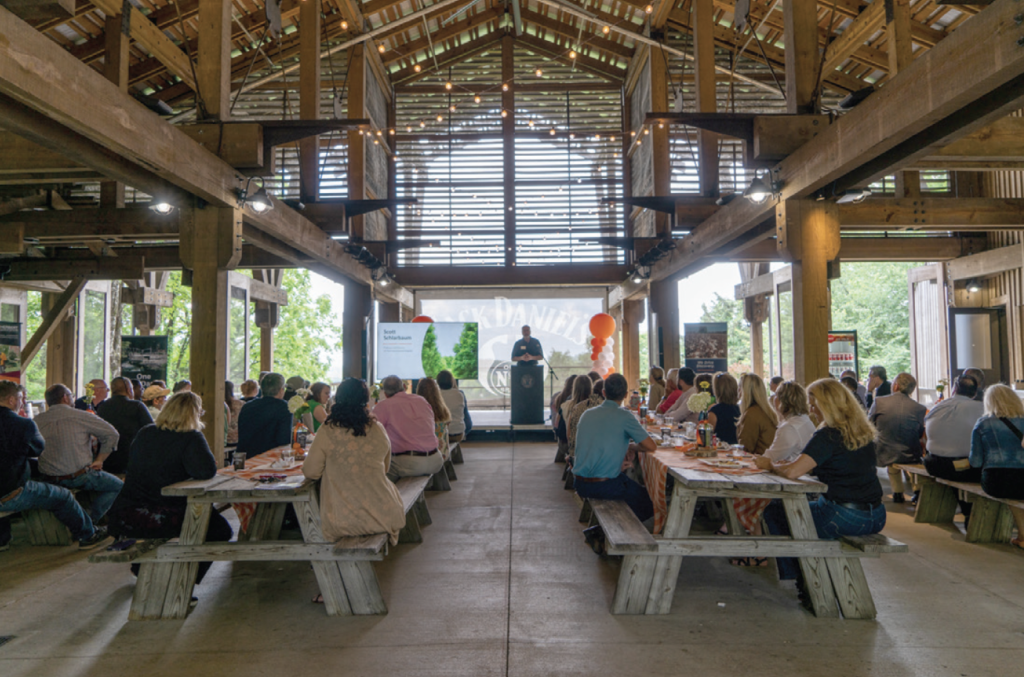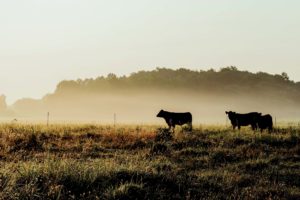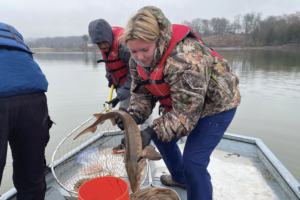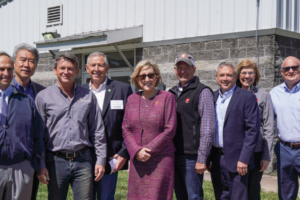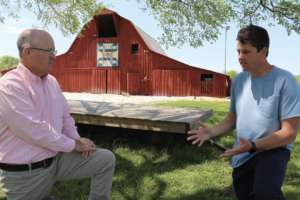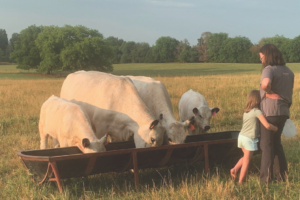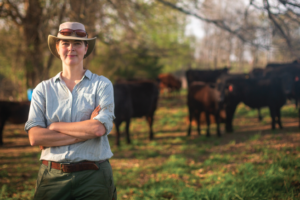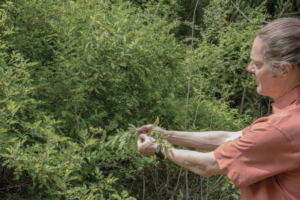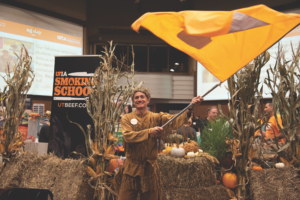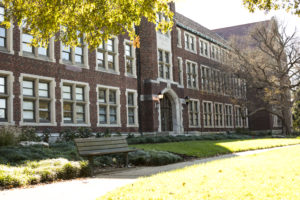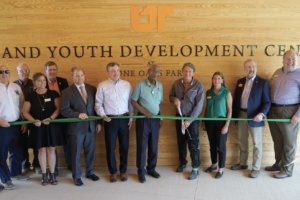
Historic Partnership with UT Tree Improvement Program Marks Twenty-Fifth Year
Tennessee forests provide a plethora of values to the general public, ranging from timber, to recreation, to aesthetic values. Many Tennessee companies rely on Tennessee forests for use in their products, and the world-famous Jack Daniel Distillery in Lynchburg, Tennessee, is no exception. The distillery uses charcoal made from native sugar maple trees in their charcoal mellowing process. Barrels made from white oak, Tennessee’s most prevalent oak species, are also critical to producing Jack Daniel’s whiskey. Tennessee forests, in general, filter rainwater to keep local aquifers pure, from which the distillery draws in the whiskey-making process. Ensuring that a continuous supply of sugar maple and white oak is available and that mixed hardwood forests continue to exist to filter rainwater is not only good for business, it is an excellent example of corporate environmental ethics.
In 1998, the distillery became concerned about local sugar maple supplies and contacted the University of Tennessee’s Department of Forestry, Wildlife and Fisheries (now the School of Natural Resources) to inquire if there was a problem and if so, what could be done about it. An inventory analysis showed there wasn’t an immediate problem, but the distillery representatives, general manager Tommy Beam and production manager Doug Clark, were still concerned about future sugar maple supplies. They were directed to me, a professor in the department and director of the long-standing UT Tree Improvement Program, to see if something could be done to ensure supply continuity.
I recommended that a sugar maple seed orchard be developed, which would eventually yield locally adapted, genetically improved seeds that could be grown by the Tennessee Department of Agriculture, Division of Forestry’s East Tennessee Nursery, located in Delano, Tennessee. The resulting seedlings would be available for purchase by Tennessee landowners to restore and enrich their forests with sugar maple trees. Since seed orchards produce seed for decades and trees take decades to grow, the sugar maple supply would be available to the distillery for many years, if not centuries, to use for charcoal production.
Seed orchards of forest trees don’t occur overnight. The development process itself takes many years and considerable investment of land, labor, and money. A handshake agreement was made—unusual in these days of contracts and legal review—between the distillery representatives and me. The distillery would provide land, maintenance, and operating funds to offset expenses, and the Tree Improvement Program would provide the necessary technical expertise needed to develop the seed orchards.
Fast forward twenty-five years to 2023, and visitors to Moore County will find over sixty-five acres of seed orchards growing where pastures once existed. The distillery had available land that wasn’t being used for operations and was willing to support an expanded and more holistic seed orchard effort to better reflect the composition of Middle Tennessee forests. This expanded effort will serve Tennessee well by significantly contributing to sustaining forest diversity, structure, and function, including water filtration, in the future through seedlings grown by the East Tennessee Nursery.
The distillery’s seed orchards of other species include white oak, black walnut, chestnut oak, butternut (also known as white walnut), overcup oak, baldcypress, willow oak, water oak, and chinkapin oak. A bur oak orchard will be added during the 2023-2024 dormant season. Of these species, only white oak is used in the whiskey making process. The other species are a mix of timber, wildlife, and habitat species. For example, chinkapin oak produces the most desirable acorn for wildlife consumption in the woods. Overcup oak acorns aren’t as desirable, but the species grows in standing water as groves and provides a unique habitat for wildlife. White oak is an excellent timber species and also provides large acorn crops highly valued by wildlife.
The butternut orchard is notable, as the species has been designated as an official State of Tennessee Threatened Species and also, a federal species of concern. Samples of the butternuts were taken for DNA analysis prior to planting. Butternut hybridizes with a Japanese nut cultivar, heartnut, which has been planted in the United States for over 130 years. Only butternuts that tested as unhybridized were planted in the orchard.
The UT Tree Improvement Program is a sixty-four-year-old research and development program in the School of Natural Resources.
The envisioned sugar maple orchard is now the oldest distillery orchard, with seeds collected in 1998 from local trees located a fourth of a mile apart to minimize their relatedness. The resulting seedlings were grown for a year and then planted as a genetic test in 2000. This orchard development approach is used to create what is known as a seedling seed orchard by thinning the genetic test over time to leave only the best trees. The sugar maple orchard has been thinned twice since planting, and a few trees are starting to produce seed. Reproductive maturation is relatively slow in sugar maple, when compared to other tree species, and this is the first year the sugar maple orchard has produced a substantial amount of seed. In contrast, the white oak orchard has been producing acorn crops large enough to be grown at the state nursery for a number of years.
The distillery’s commitment in 1998 has born fruit in other areas. Following Jack Daniel’s example, the Margaret Finley Shackelford Trust committed to developing seed orchards for western Tennessee on the UT Ames AgResearch and Education Center, and TVA began working with the Tree Improvement Program on building orchards to serve eastern Tennessee. Collectively, the statewide orchard effort is referred to as the Tennessee seed orchard system, and all of it started with a handshake in a Middle Tennessee pasture twenty-five years ago!
Dive deeper into the UT Tree Improvement Program – Jack Daniel Distillery partnership in a feature article published by Our Tennessee magazine. Find it at tiny.utk.edu/JD.

Better together – The elements of a perfectly aged partnership, and one whose success both Jack Daniel Distillery and UTIA regard as well worth toasting 
Seventy-five individuals, including representatives of Jack Daniel Distillery, Brown-Forman, government agencies, and the forest industry, turned out for a special event held June 1 at the distillery to celebrate the achievements and impacts that have come from its alliance with the UT Tree Improvement Program.
MORE FROM THIS ISSUE
